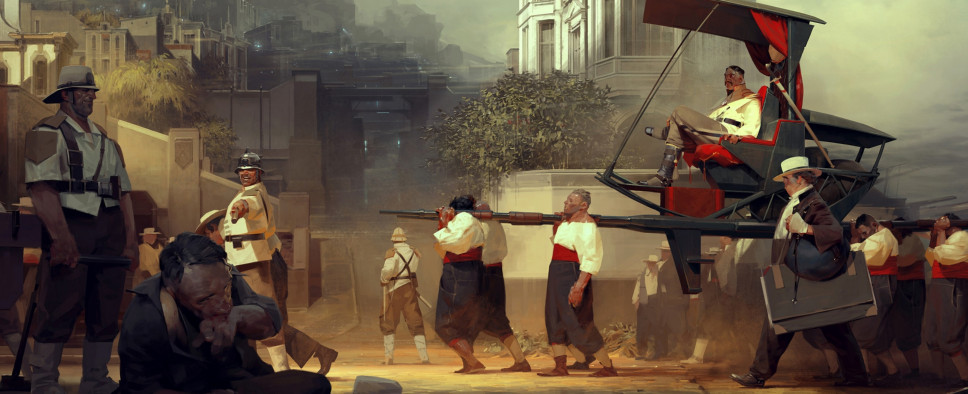Harvey Smith Interview on Creating Memorable Worlds
-
Category: News ArchiveHits: 1156

Harvey Smith, Arkane Studios' creative director, offers advice on how to create distinct and memorable universes in an interview with Gameindustry.biz, where he advocates taking familiar concepts and then adding exciting and unexpected twists to them. And while I would be completely fine with most fantasy games being set in some variation of the Forgotten Realms with its classic dwarves and elves, the interview does raise some interesting points. An excerpt:
It's the dream of almost every creator to forge a world that people instantly recognise.
While few gaming realms are as instantly recognisable as Star Wars' galaxy far, far away or J.K. Rowling's wizarding world, there are still franchises set in universes that can be identified by millions of people from a single screenshot, item or phrase.
One of the most prominent examples from the past five years is Bethesda's Dishonored. The series' blend of steampunk and the supernatural sets it apart from any other franchise, thanks in no small part to the vision and leadership of Harvey Smith, creative director at Dishonored developer Arkane Studios.
Speaking to GamesIndustry.biz earlier this year, Smith offered the following advice for creating a distinct world.
"Raymond Loewy, a designer in the '50s, once said what people want is something very familiar but different enough," he explains. "Something new but not too new, not too familiar. That's a tricky combination.
"When you're making something you want to be recognisable, if you find yourself doing exactly what has been done before you need to put a twist on it. We constantly talk about that - bone charms, on some level, are just a system of perks but they work differently. They don't just modify an existing power, they do something different. What's their place in the main world, since most people aren't magic-using assassins?
"We say that sailors will carve a piece of whale bone or something from an exotic animal into a cool shape during a full moon and keep it in their pocket as a way to ward off venereal disease, or women will use it to avoid getting pregnant. That's the function of those. You can imagine an old woman hanging one over the door to her kitchen so that the food never spoils. That's the larger fictional cloth behind them, but then the player has them to improve their powers.
[...]
So far, fans have only seen two regions of Dishonored's world: Dunwall, the capital city of the first game, and Karnaca, the sun-kissed setting central to last year's sequel. But in-game maps show a much wider world beyond these two locales - is this just decorative, or does Smith have entire continents planned out for use in future instalments?
"A lot of it is in my head," he admits. "A lot is also in our documentation. There is stuff alluded to in the comic books, like the place in Dunwall called Wormwood Way where bone charms and heretics collect and illegal shops thrive - those have never appeared in the game.
"We believe in, as a creative technique, making the world larger than what the player can possibly experience. First of all, you can't see everything in one playthrough. Second of all, you have the sense of a larger world because we allude to it, but it's not all there. That just creates a sense of mystery and a sense of a bigger world.
"One of my co-workers, my lead designer, one of his parents is from Paris and one is from the Ivory Coast. He alludes to things that happened to him when we're going back and forth that don't really exist for me; they only exist as his stories. That makes the world feel bigger than I am; interesting, mysterious and exotic. We try to do that in our fiction as well."

